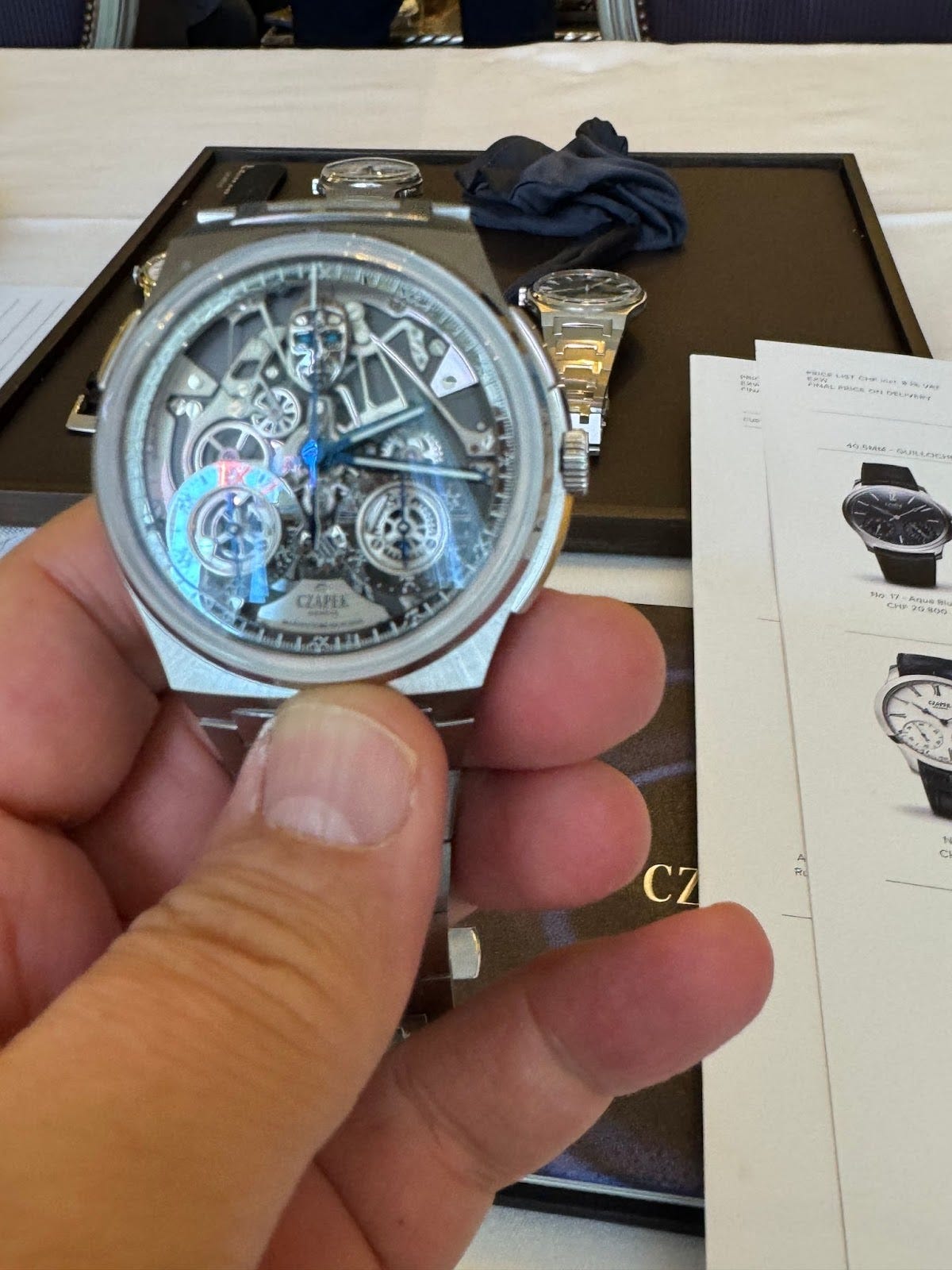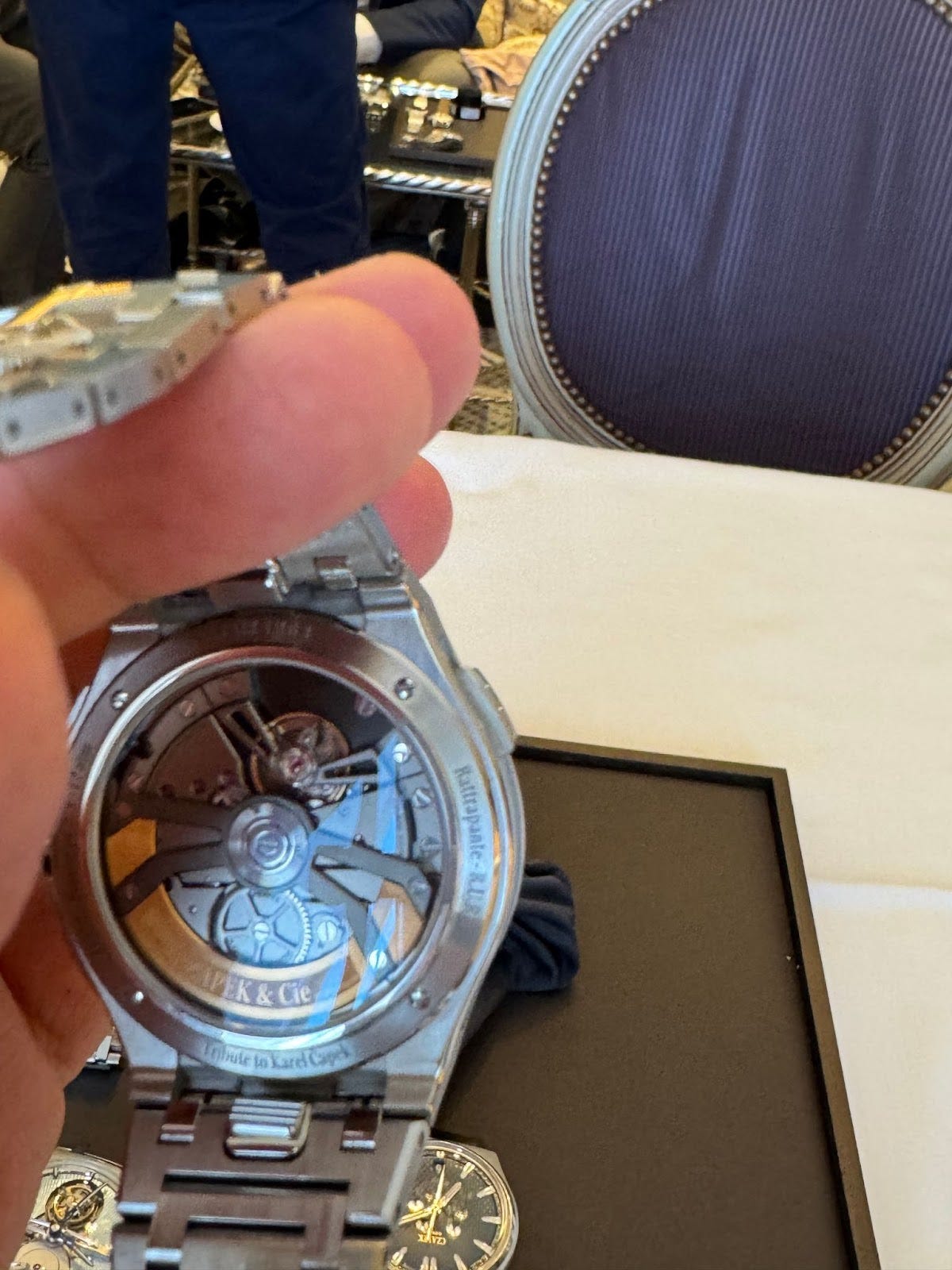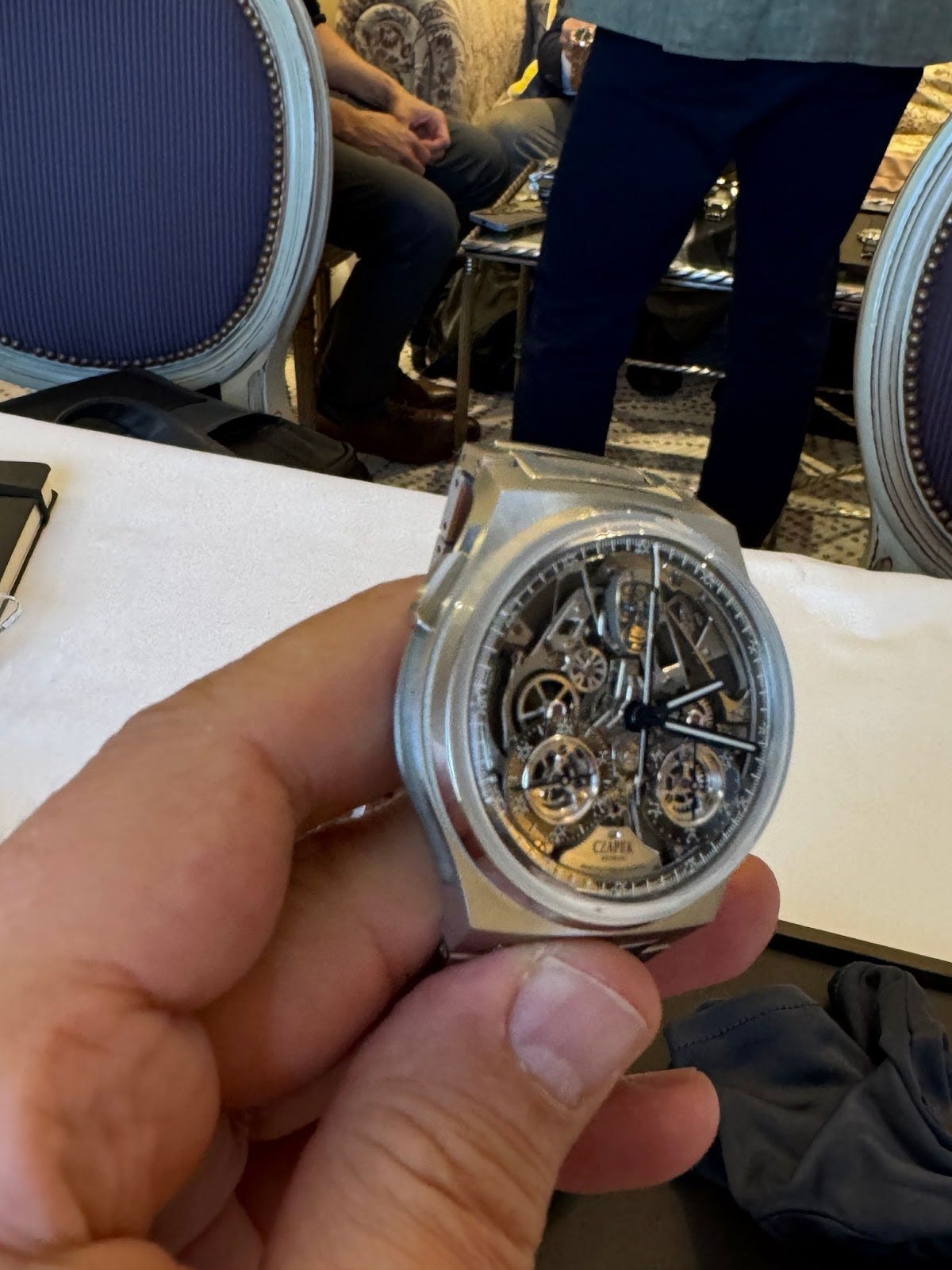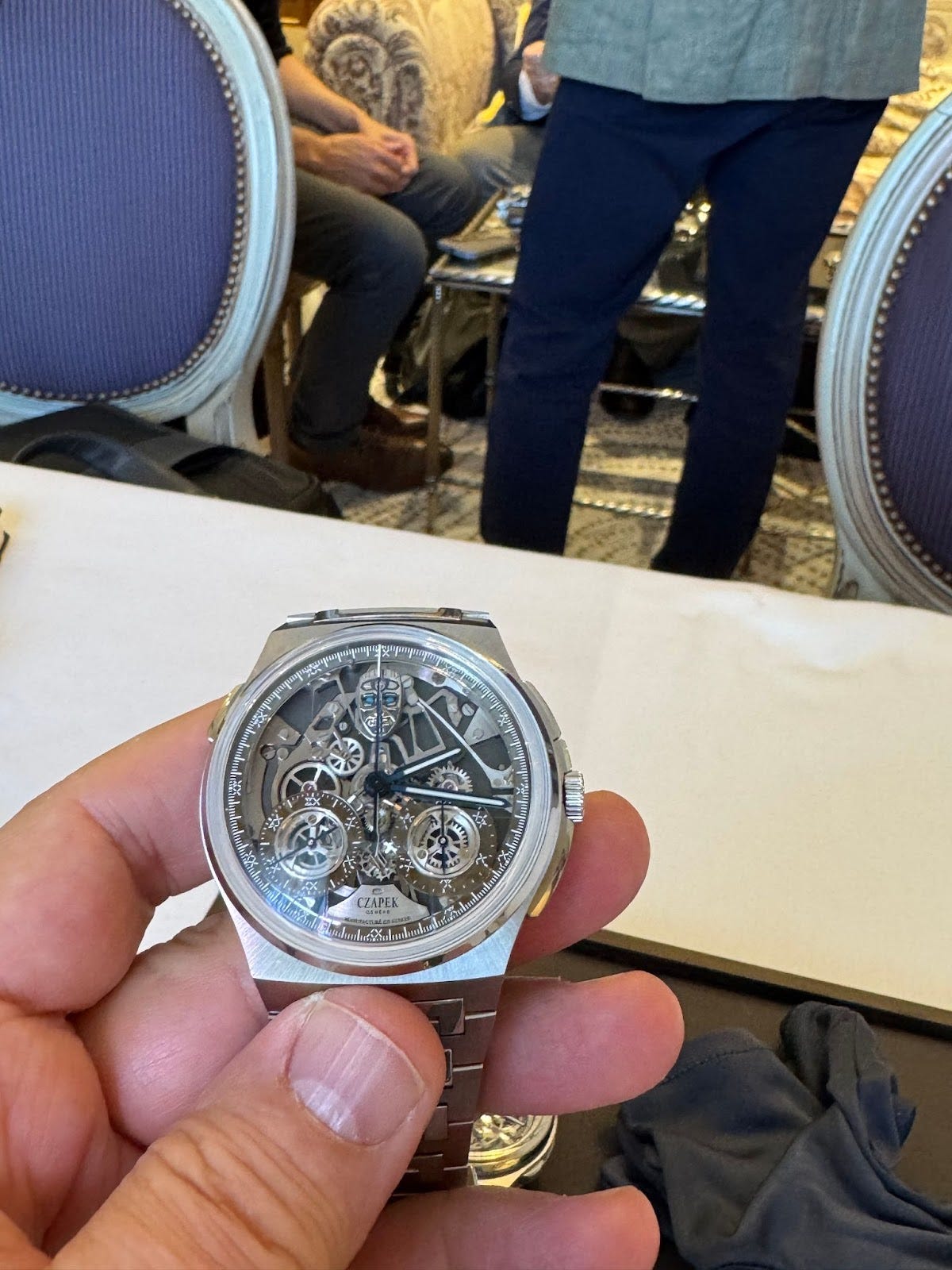Robots, Rattrapantes, and Other Necessary Excesses
Czapek unveils its Antarctique Rattrapante ‘R.U.R.’ with a robot on the dial, a split-seconds complication turned inside-out, and a century-old Czech literary reference—because why not?
The contradiction could not be clearer: a Geneva maison resurrected in 2015, now grafting a titanium robot head onto a haute horlogerie rattrapante, all in the name of “beauty.” One imagines François Czapek, Napoleon III’s watchmaker, squinting in disbelief. And yet, this is the century we inhabit: robots and emperors share the same wrist. In a landscape where most brands are dusting off 1960s designs, Czapek has chosen to attach science fiction directly on top of the chronograph column wheel. Contradiction is now the most reliable currency of luxury—audacity presented as inevitability. The lesson? If you can’t decide between Jules Verne and Audemars Piguet, have both.
The justification, naturally, comes wrapped in sincerity. The robot was, we are told, suggested by a shareholder. Nothing spells horological purity like an investor demanding a Predator-inspired mascot. And yet, the press release doubles down: beauty requires playfulness, playfulness requires a robot. In-house, of course, still applies—but here it applies to whimsy. Collectors know the trick. Every claim to absolute authenticity—“entirely conceived, designed, developed, and assembled”—is always balanced by the wink of market necessity. But no matter: the robot is here, its eyes flashing like a nightclub bouncer on caffeine, and if irony can be engineered, Czapek has engineered it.
Then comes the detail to savor: the robot’s eyes. Yellow on start, red on stop, blue on reset. Forget Geneva Seal hallmarks—your chronograph now comes with a mood ring. One can picture the ritual: the collector at his desk, furiously pressing the pusher to toggle colors while a spreadsheet languishes unfinished. This, finally, is horology for the TikTok era—complication as a dopamine dispenser. And yet, the craftsmanship is genuine: titanium polished, micro-painted neon, laser-engraved perfection. If absurdity can be hand-finished, this is it.
The claim, of course, is that this is a tool watch. Sport-chic, water-resistant, steel bracelet, robust construction. The reality is that most will wear it as intellectual jewelry, a portable footnote to Czech theatre. Nobody is timing laps with a 42.5 mm robot-faced rattrapante. The truth is that collectors will glance at the dial, smile at the eye color, and then return to their email. And still, they will love it—because watches are not about timing but about stories. And this one has a story worthy of a syllabus.
Czapek’s mythology is rich: the 19th-century émigré watchmaker, Napoleon III’s purveyor, the first boutique on Place Vendôme. All very stately. And now? Predator alphabets, Mortal Engines, and Czech intellectuals. The panache is admirable. But unlike many mythologies in the trade, this one comes bolted to an actual craft element: the calibre SXH6, designed with Chronode, turning the split-seconds mechanism inside-out. Bridges beveled, screws polished, isolator mechanism reducing friction. The absurd costume of a robot head sits atop a real horological substance. Beneath the satire, serious watchmaking lives.
The stated function—split-seconds timing—is a complication so esoteric that even collectors struggle to justify it. Who needs to measure two intervals at once, aside from Swiss army officers of the 19th century? And yet the psychological need it serves is obvious. In a world of infinite smartwatches, the owner of an R.U.R. declares: my machine is dumber, slower, less practical, and infinitely more beautiful. To own a split-seconds chronograph with flashing robot eyes is to embrace glorious inefficiency, to elevate play above purpose. It is not the function one buys, but the theatrical refusal of function.
Which brings us to the delicious tension of precision and absurdity. Here is a movement regulated to 4Hz, hand-finished with anglage, a rotor of recycled 5N rose gold, screws polished into gleaming insignificance. All of this to drive a robot head that blinks like a traffic light. This is horology’s central paradox: the more absurd the outcome, the more precise the labor behind it. The R.U.R. thrives on this tension, turning watchmaking into a performance piece. It is both Shakespearean farce and Geneva-grade complication, a collision of seriousness and silliness in a single case.
Placed in the broader landscape of the 2020s, the Czapek R.U.R. is more than a gag. The major groups are stuck recycling archive models like endless remakes of Bond films, while independents are staging more daring spectacles. MB&F builds interstellar machines, De Bethune sculpts starlit domes, and Czapek, with Gallic humor, inserts a robot into a rattrapante. Each is an answer to the same problem: how to distinguish oneself when everyone else is mining the past. Czapek’s answer is satire by design, a watch that mocks the seriousness of its own complication while delivering it flawlessly. In this, it captures the spirit of the decade better than most.
Author’s Opinion
One could roll one’s eyes, of course. A robot on a chronograph? Predator alphabets on subdials? Surely this is gimmickry of the highest order. But it is also courage of the highest order. At a time when most brands are timidly reissuing yesterday’s designs, Czapek has built a watch that risks ridicule. And that, paradoxically, is what makes it matter. Beneath the neon eyes and titanium head lies a serious calibre, a masterpiece of split-seconds engineering. My verdict: a glorious, whimsical, and brilliant watch that deserves collectors’ attention. Reflection: the R.U.R. reminds us that luxury thrives not on utility, but on audacity—that the most memorable watches are those that dare to be absurd, and dare to do so beautifully.







